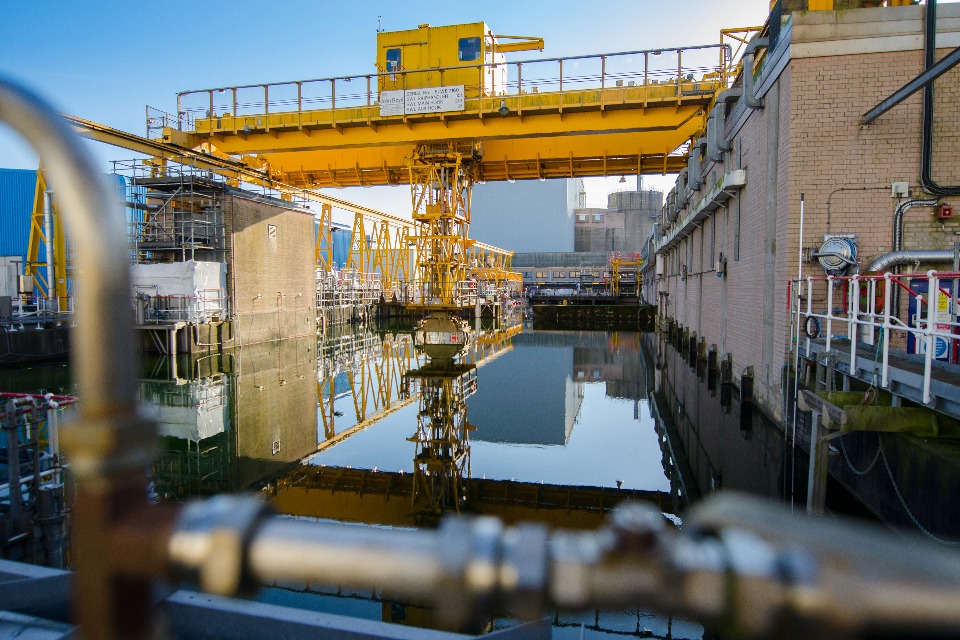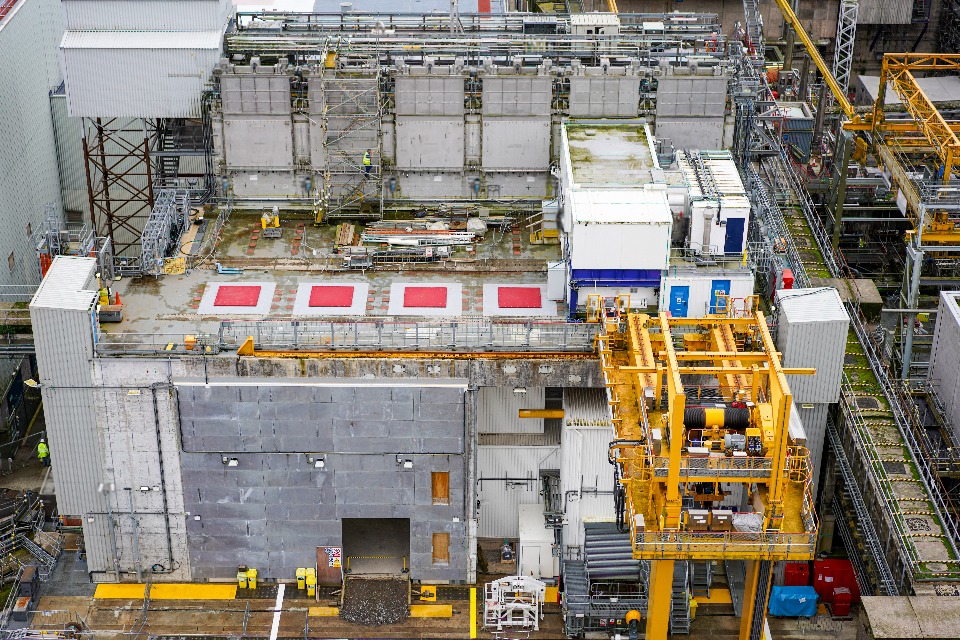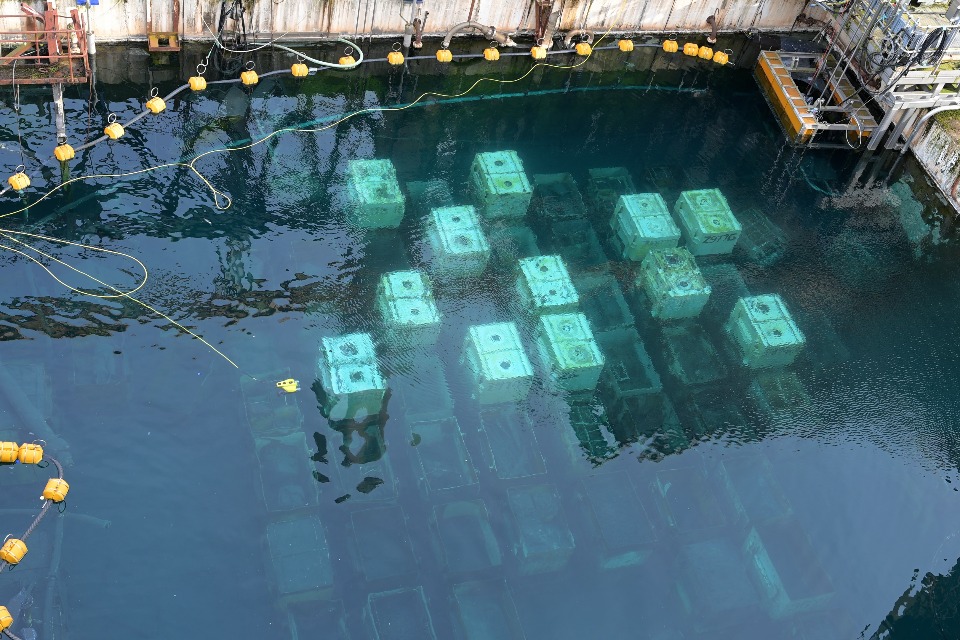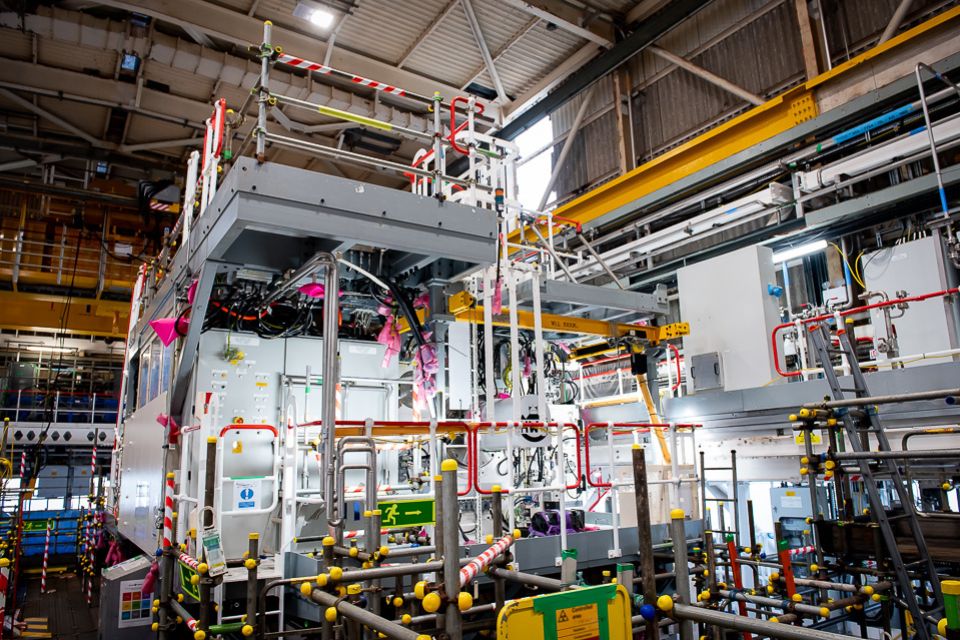Sellafield Ltd priorities and progress
A snapshot of Sellafield Ltd’s key activities and priorities. This page is continually updated with the progress we're making in each of our business areas.
About Sellafield Ltd
We are delivering against national safety, security and energy needs. In operating, developing, and decommissioning the Sellafield site, we are also delivering the largest environmental restoration project in Europe.
In short, we solve complex nuclear, engineering, and infrastructure challenges for the UK every single day.
In the past, we have been responsible for breakthroughs such as the world’s first full-scale commercial nuclear power station, and today we are helping to keep lights on across the UK by safely receiving and storing spent nuclear fuel from the UK’s fleet of power stations.
Sellafield is the only site in the country that can safely manage all forms of nuclear waste, with our teams finding new ways to ensure it is kept safe until a permanent disposal facility is ready.
We are also guardians of the UK’s largest stockpile of nuclear materials.
Our world-class engineers and nuclear professionals tackle these challenges with the same spirit of innovation that has always run through our organisation.
All our activities are driven by a single purpose: to create a clean and safe environment for future generations.
We deliver on that purpose while providing value to:
-
Our people – helping them to grow, develop and flourish
-
Our communities – creating a positive social impact in West Cumbria, Warrington and beyond
-
Our industry – supporting the nation’s nuclear infrastructure, completing our decommissioning mission, and shaping best-practice standards.
Priorities
NDA strategy
We are one of four vital component parts of the Nuclear Decommissioning Authority (NDA) Group, which shares a collective mission to safely decommission the UK’s legacy sites and facilities.
The Sellafield Ltd priorities are embedded within the NDA strategy.
Sellafield Ltd strategy
Our strategy outlines the type of organisation Sellafield wants to be, whilst clearly setting our 2020 - 2025 objectives.
Progress overview
An overview of our past progress across all our activities, within previous financial years can be found in our catalogue of annual review documents.
High-hazard risk reduction priorities and progress
Among the more than 200 nuclear facilities on the site are some of the most hazardous nuclear buildings in the country – our legacy ponds and silos.
These legacy facilities include:
They present complex decommissioning challenges and getting the waste out of them remains one of our top priorities. By doing so we are actively reducing these hazards and protecting the environment.
To support our retrievals work, we have continued to maintain the integrity of the facilities, and deliver the projects required to establish the required waste routes.
Read more about our legacy ponds and silos
Pile Fuel Storage Pond
Built between 1947 and 1949, the Pile Fuel Storage Pond (PFSP) is the oldest nuclear pond on the Sellafield site. It is also the largest open air nuclear fuel storage pond in the world.

Pile Fuel Storage Pond, Sellafield
It provided storage, cooling and decanning of irradiated fuel and isotopes from the two Windscale Pile reactors in preparation for reprocessing.
Although taken out of operation in 1962 it continued to receive irradiated fuel and miscellaneous intermediate level waste (ILW) from the UK nuclear programme until the early 1970s.
By the mid-1970s, the import of waste ceased and the plant, with its inventory, was placed into a passive care and maintenance regime.
The priority
Retrievals from the PFSP commenced in the 1990s. The facility is now entering its final phase of retrievals.
Our priority today is to continue to retrieve the remaining inventory of waste in the pond – solid ILW, sludge, sludge debris and fuel materials - so it can be placed treated appropriately and placed into safe, modern storage.
Our progress
76% of the radioactivity has now been removed from the PFSP. We are accelerating the removal of ILW with a series of decommissioning dives which started in 2023.
We have established proven waste routes for the waste coming out of the pond (whilst continuing to explore further future opportunities).
Pile Fuel Storage Pond progress updates
Sellafield clean-up team dives into history - March 2023
It’s been a massive effort in challenging times - March 2021
A simple solution speeds up Sellafield decommissioning - December 2020
Important work in tackling future risks restarts at Sellafield - May 2020
Pond cleaner ready to make a splash - August 2019
Triple tonne triumph - December 2018
Radioactive sludge makes momentous move to modern storage - February 2017
Radioactive sludge removed from Sellafield pond for first time - December 2016
Nuclear clean-up milestone makes Sellafield safer - March 2016
Sellafield clean-up reaches crucial milestone - October 2015
Pile Fuel Cladding Silo
Commissioned in 1952, The Pile Fuel Cladding Silo (PFCS), is the oldest store on the Sellafield site. The six-compartment silo was built to store cladding from nuclear fuel used by the Windscale Piles.

Pile Fuel Cladding Silo, Sellafield
As the UK’s civil nuclear power industry grew, the silo also received and stored cladding from used Magnox fuel from power stations around the country.
In 1972, the facility was full and placed into care and maintenance.
Read more about the Pile Fuel Cladding Silo
The priority
We started retrievals from the PFCS in 2023.
Our priority today is to continue waste retrievals from the legacy silo so it can be placed a safe and modern store called the Box Encapsulation Plant Product Store (BEPPS).
Our progress
We are currently in the early retrievals phase of this project and are on track to achieve our target of filling 18 of the bespoke-built 3 metre cube stainless boxes with waste in 2024/25.
Pile Fuel Cladding Silo progress updates
Sellafield makes history with first retrievals from oldest store - August 2023
Sellafield Ltd confirms contract for waste storage boxes - June 2021
High-tech route for silo waste - February 2021
Important work in tackling future risks restarts at Sellafield - May 2020
Sellafield’s ‘locked vault’ ready to be emptied - March 2019
First Sellafield waste boxes cross the finish line - February 2018
Sellafield’s ‘locked vault’ is ready to be emptied - Dec 2017
First hole is cut in world’s oldest nuclear store - Sep 2017
Sellafield’s magnificent six now in place - Dec 2016
Engineering feat opens door to Sellafield clean-up progress - May 2016
First Generation Magnox Storage Pond
Constructed in the 1950’s, the First Generation Magnox Storage Pond (FGMSP) was commissioned to receive and store irradiated fuel from Magnox reactors and remove the fuel cladding prior to fuel being reprocessed.
The legacy pond predominantly received fuel from Calder Hall, the UK’s first nuclear power station, on the Sellafield site. However, the pond also received and processed fuel from the UK’s fleet of 26 reactor units, Latina in Italy and Tokai in Japan.

First Generation Magnox Storage Pond, Sellafield
The plant operated safely for over 30 years with the final fuel being received into the facility in 1992. During this period 27,000 tonnes of fuel were processed – nearly 2.5 million fuel rods.
The priority
We started retrievals from the FGMSP in 2015.
Our priority today is to continue with the retrievals of the sludge, intermediate level waste (ILW) and spent fuel within the pond. The various forms of retrieved waste will be treated appropriately and placed in safe, modern stores.
Our progress
We are currently in the bulk waste retrievals phase of this project. We successfully removed the first zeolite skip from the pond in 2024.
The solid waste retrieved from the pond is being transferred and self-shielded boxes and safely-stored in a new purpose-built legacy facility called the Intermediate Storage Facility (ISF).
First Generation Magnox Storage Pond progress updates
Sellafield clean-up skips ahead after triple first in legacy pond - March 2024
Important work in tackling future risks restarts at Sellafield - May 2020
Robots tackle Sellafield’s notorious radioactive ‘hot spot’ - January 2019
Game changing progress in Sellafield pond - July 2018
Innovative scaffolding helps Sellafield reach new heights - July 2016
Magnox Swarf Storage Silo
The Magnox Swarf Storage Silo (MSSS) is the most hazardous building on the Sellafield site.
The silo contains approximately 10,000 cubic metres of historic waste within 22 individual compartments of the silo.
MSSS was built more than 50 years ago for the underwater storage of Magnox fuel cladding (or swarf) that was removed from used nuclear fuel rods. This allowed the rods to be reprocessed.
It received swarf from the First Generation Magnox Storage Pond and the Fuel Handling Plant, along with a range of other items of intermediate level waste.
The final batch of waste was tipped into the legacy silo in June 2000, at which point the facility was put under a regime of care and maintenance.
Read more about the Magnox Swarf Storage Silo
What is the Magnox Swarf Storage Silo? - Case study - GOV.UK
The priority
We started to retrieve the stored waste from Magnox Swarf Storage Silo (MSSS) in 2022.
Our priority today is to continue to retrieve the stored waste and silo liquor so it can be placed in a safe and modern store. Most of the solid waste from MSSS will be placed in the Box Encapsulation Plant Product Store (BEPPS).
There is an ongoing leak of radioactive liquid from the MSSS facility at Sellafield into the ground. The risk to the off-site environment and public is expected to be very low. There is no risk to public water supply boreholes from the leak.
Working closely with the Environment Agency and the Office of Nuclear Regulation (ONR), the priority for our teams is to continue to monitor the leak. We must do this whilst continuing to retrieve waste from the silo and exploring the possible implementation of measures to reduce the consequences of the leak. Read more about the leak.
Our progress
Waste retrievals were temporarily halted but successfully restarted in February 2024. This was following the successful commissioning of the new Nitrogen Generation Plant and the completion of some electrical repairs needed on the Silo Emptying Plant machine.

Magnox Swarf Storage Silo, Sellafield
The second Silo Emptying Plant machine has been installed. Preparation and commissioning work on the machine is being conducted inside the silo. Once completed, retrieval operations will commence.
We are also continuing to closely monitor the ongoing leak of radioactive liquid from the MSSS facility. in 2023/24 we added sixteen more boreholes close to the silo to enhance this monitoring capability.
Magnox Swarf Storage Silo progress updates
Discovering the secrets in the ground underneath Western Europe’s most hazardous building - November 2024
Sellafield silo installs second waste retrieval machine - March 2023
First waste removed from old nuclear Sellafield store - June 2022
SEP2 moves into position for retrievals - May 2021
Sellafield Ltd confirms contract for waste storage boxes - June 2021
Important work in tackling future risks restarts at Sellafield - May 2020
Work begins on second emptying machine at Sellafield waste silo - January 2020
A step forward for Sellafield’s most hazardous building - August 2018
First Sellafield waste boxes cross the finish line - February 2018
Sellafield tackles its biggest risk yet - June 2018
The new robot helping clean up Sellafield - October 2017
Installed: the machine set to clean up Sellafield’s most hazardous building - February 2017